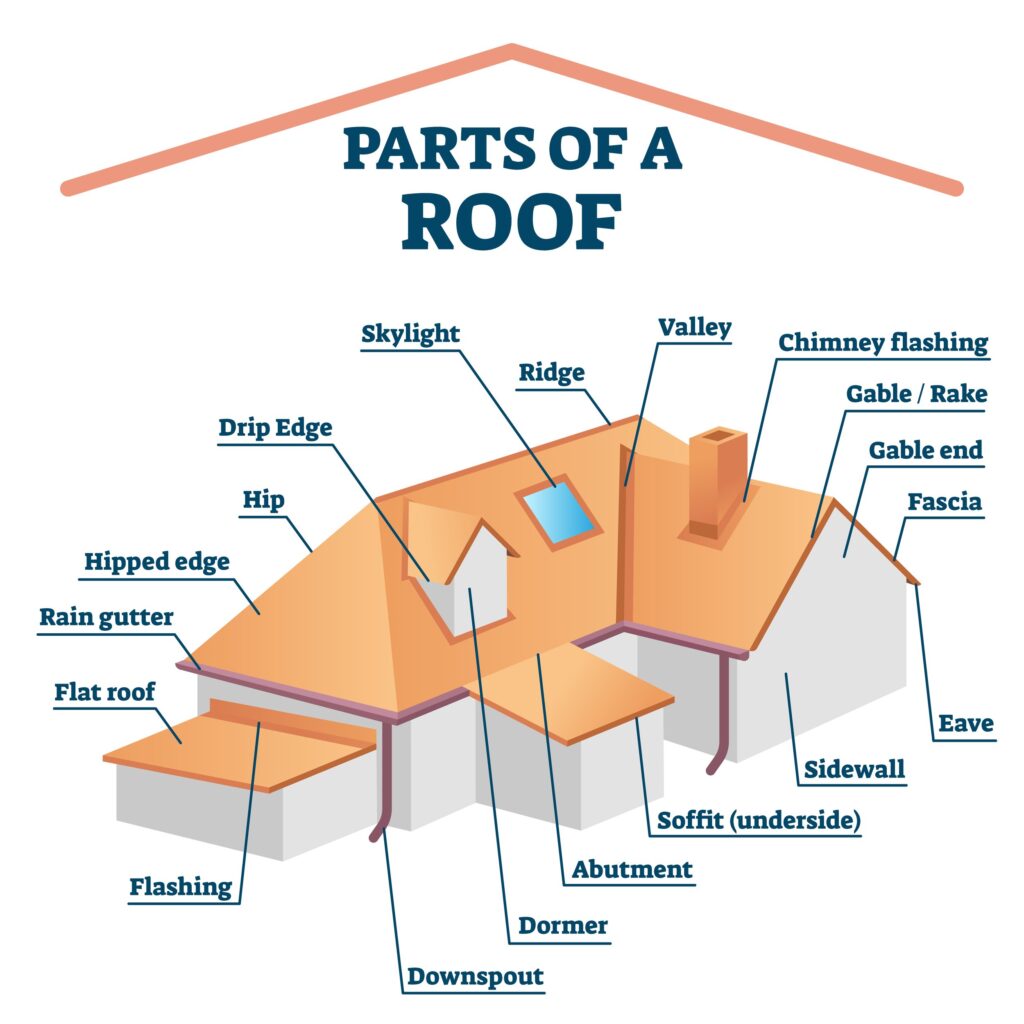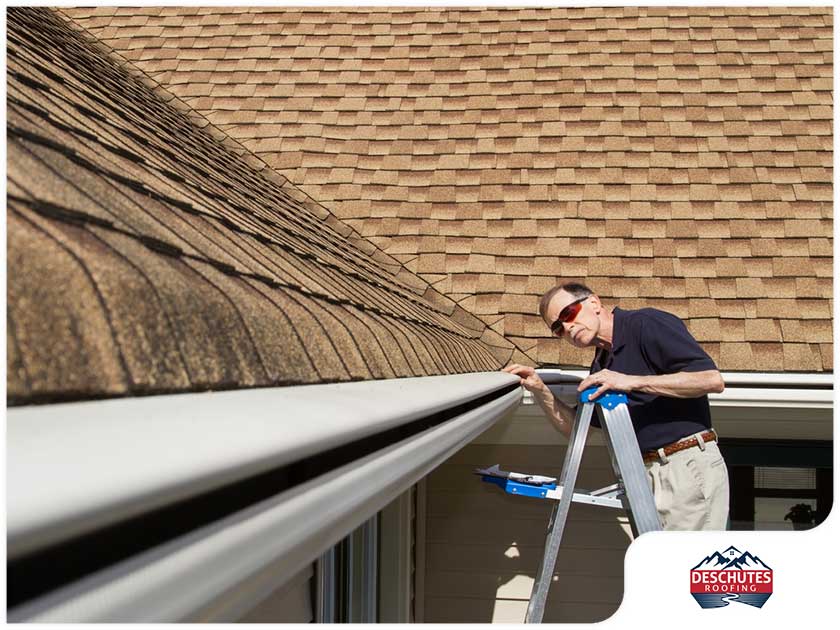Have you ever wondered how often you should replace the roof of your house? It’s an important question that many homeowners ponder. After all, your roof is a vital part of your home’s protection against the elements. In this article, we will explore the factors that determine how often your roof needs to be replaced, providing you with the knowledge to make an informed decision about the maintenance of this crucial aspect of your property.
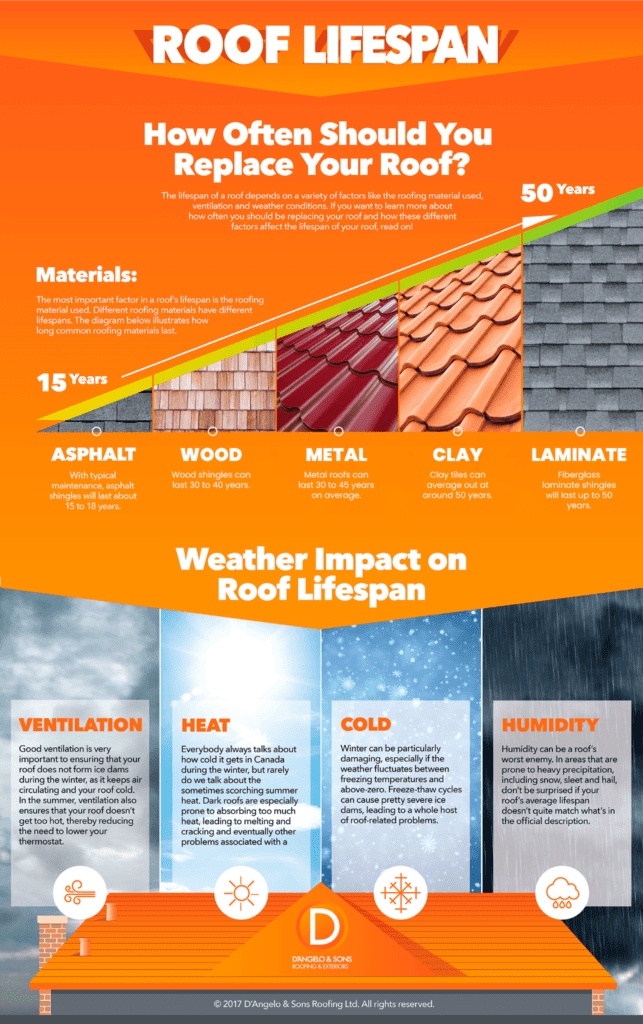

Factors Influencing Roof Lifespan
Climate
The climate in your area plays a significant role in determining the lifespan of your roof. Extreme weather conditions such as heavy rainfall, high winds, snowstorms, and intense heat can take a toll on your roof over time. Constant exposure to these elements can cause damage, including shingle deterioration, leaks, and even structural issues. It’s essential to consider your local climate when choosing roofing materials and regularly inspect and maintain your roof to ensure its longevity.
Roof Material
The choice of roof material is another critical factor that affects the lifespan of your roof. Different materials have varying levels of durability and resistance against weathering. Asphalt shingles, for example, are one of the most common roofing materials and have an average lifespan of 15-30 years. On the other hand, metal roofing can last 40-70 years, while slate roofing can endure for over a century. It’s essential to select a roof material that fits your budget, aesthetic preferences, and expected lifespan.
Installation Quality
The quality of the roof installation also significantly impacts its lifespan. A poorly installed roof is more prone to leaks, sagging, and other issues that can shorten its lifespan. It’s crucial to hire a reputable roofing contractor with experience and expertise in installing the specific type of roof material you choose. A professional installation ensures that the roof is properly aligned, sealed, and secured, reducing the risk of premature damage and increasing its overall lifespan.
Maintenance
Regular maintenance is vital in extending the lifespan of your roof. Conducting routine inspections, cleaning gutters and downspouts, and addressing any signs of damage promptly can prevent issues from escalating and causing further damage. By keeping your roof clean and free of debris, you minimize the risk of clogged gutters and stagnant water, which can lead to leaks and other forms of water damage. Regular maintenance helps identify small problems before they become major issues, ultimately prolonging the life of your roof.
Damage Severity
The severity of any damage your roof experiences can also impact its lifespan. If your roof suffers significant damage from storms, falling trees, or any other destructive event, it may require immediate repairs or even a full replacement. Severe damage compromises the structural integrity of the roof, making it less resistant to future weather events and shortening its overall lifespan. It’s crucial to address any damage promptly and adequately to minimize the risk of further deterioration.
Homeowner’s Insurance
Your homeowner’s insurance can also influence the lifespan of your roof. It’s essential to review your policy to understand what types of damage are covered and under what conditions. Damage caused by certain events, such as storms or hail, may be covered by your insurance, allowing you to repair or replace your roof without a significant financial burden. Understanding your coverage and reporting any eligible damage promptly can help ensure that your roof is adequately protected and its lifespan maximized.
Signs Your Roof May Need Replacement
Age of the Roof
One of the first signs that your roof may need replacement is its age. As mentioned earlier, different roofing materials have varying lifespans. If your roof is approaching or has surpassed its expected lifespan, it may be time to consider replacing it, even if there are no visible signs of damage. Aging roofs are more prone to leaks, shingle deterioration, and other issues that can compromise their functionality and effectiveness in protecting your home.
Shingle Damage
Damaged shingles are a clear indication that your roof may need replacement. Shingles can become cracked, missing, or curling over time due to exposure to the elements or poor installation. These damaged shingles leave your roof vulnerable to leaks and can allow water to seep into your home, causing further damage. If you notice any signs of shingle damage, it’s crucial to have a professional inspection to determine if a roof replacement is necessary.
Cracked or Curling Shingles
Cracked or curling shingles are not only unsightly but also pose a risk to the integrity of your roof. Cracked shingles can allow water to penetrate the underlying layers, leading to leaks and potential structural damage. Curling shingles, on the other hand, can be indicative of aging or poor installation. Both of these conditions require immediate attention and may indicate the need for a roof replacement.
Leaks and Water Damage
If you notice water stains on your ceiling or walls, it’s a clear sign that your roof may be compromised. Leaks can occur as a result of damaged or missing shingles, deteriorated flashing, or other forms of roof damage. It’s essential to address these leaks promptly to prevent further water damage to your home’s interior and to avoid potential mold and mildew growth. In some cases, repairing the damaged section of the roof may suffice, but if the damage is widespread, a roof replacement may be necessary.
Sagging or Uneven Roof
A sagging or uneven roof is a severe indication of potential structural issues and should not be ignored. It can be a result of weakened or damaged roof supports, water intrusion, or even the weight of accumulated snow or debris. A sagging roof poses significant safety risks and may indicate a need for immediate roof replacement. It’s crucial to consult a professional roofer if you notice any sagging or unevenness to assess the extent of the damage and determine the appropriate course of action.
Granule Loss
If you notice an excessive amount of granules in your gutters or downspouts, it may be a sign of granule loss on your shingles. Shingles rely on these protective granules to shield them from the sun’s UV rays and prolong their lifespan. Granule loss can occur due to aging, poor-quality shingles, or severe weather conditions. If left unaddressed, granule loss can lead to shingle deterioration and ultimately require a roof replacement.
Algae or Moss Growth
The presence of algae or moss on your roof can be an aesthetic concern, but it can also lead to more profound issues. Algae and moss thrive in moist environments, and their growth on your roof may indicate excessive moisture retention. This moisture can accelerate the process of shingle deterioration and compromise the lifespan of your roof. Regular cleaning and maintenance can help prevent algae and moss growth, but if it’s already extensive, a roof replacement may be necessary.
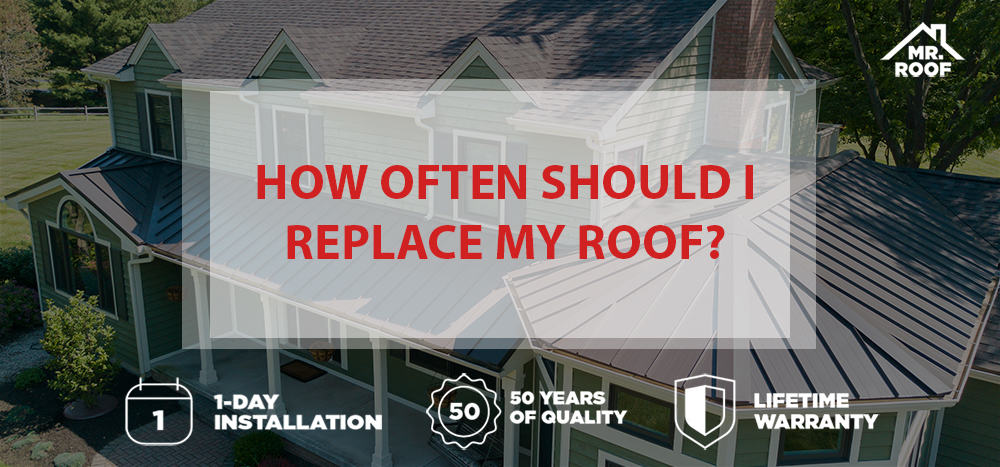

Average Lifespan of Different Roofing Materials
Asphalt Shingles
Asphalt shingles are one of the most commonly used roofing materials due to their affordability and versatility. On average, asphalt shingles have a lifespan of 15-30 years, depending on the quality of the shingles and the local climate. Regular inspections, maintenance, and prompt repairs can help maximize their longevity.
Wooden Shingles
Wooden shingles, also known as wood shakes, provide a natural and rustic look to a home. These shingles can last approximately 20-40 years, depending on the type of wood used and the level of maintenance. Proper installation and regular treatment can help extend the lifespan of wooden shingles.
Metal Roofing
Metal roofing is known for its durability and longevity. Depending on the type of metal used, a metal roof can last anywhere from 40 to 70 years or even more. Metal roofs are resistant to fire, wind, and impact and require minimal maintenance, making them an excellent choice for homeowners seeking a long-lasting roofing solution.
Slate Roofing
Slate roofing is considered one of the most durable roofing materials available. With proper installation and maintenance, a slate roof can last well over a century. The natural properties of slate, such as its resistance to fire, rot, and insects, contribute to its exceptional lifespan. However, the initial cost and weight of slate roofing may be factors to consider when choosing this material.
Tile Roofing
Tile roofing, whether made of clay, concrete, or other materials, is known for its longevity and aesthetic appeal. Tile roofs can last anywhere from 50 to 100 years, depending on the specific type of tile and the maintenance provided. Regular inspections and repairs are essential to ensure the longevity of tile roofs.
Frequency of Roof Inspections
Annual Inspections
Annual inspections are a crucial part of roof maintenance and should be conducted by a professional roofer. These inspections aim to identify any signs of damage, wear and tear, or potential issues that may lead to significant problems if left unaddressed. Annual inspections are especially important for older roofs or those located in areas with harsh weather conditions. By detecting and addressing issues early on, you can extend the lifespan of your roof and avoid costly repairs.
Biannual Inspections
In addition to annual inspections, biannual inspections can be beneficial in areas with extreme seasonal variations or climates that put added stress on the roof. By conducting inspections in the spring and fall, you can assess any potential damage caused by winter or summer weather conditions. Biannual inspections allow for timely repairs and ensure that your roof is well-maintained throughout the year.
Inspection After Severe Weather
After experiencing severe weather events such as storms, hurricanes, or high winds, it’s crucial to have your roof inspected. These weather conditions can cause significant damage to your roof, including missing or damaged shingles, leaks, and structural issues. Prompt inspections by a professional roofer can help identify and address any storm-related damage to ensure the performance and longevity of your roof.
Inspection After Major Home Renovations
If you are planning or have recently completed major home renovations that involve the roof or surrounding areas, it’s essential to have a thorough inspection afterward. Construction work may cause damage to the roof, such as cracked shingles, or disturb the integrity of the flashing or other roofing components. Inspections after major renovations help identify any issues caused by the construction process and allow for necessary repairs or replacements.


Factors Causing Premature Roof Failure
Poor Installation
One of the leading causes of premature roof failure is improper installation. A poorly installed roof may not have the correct alignment, secure fastenings, or appropriate sealing, leaving it vulnerable to leaks, shingle damage, and other issues. It’s essential to select a reputable roofing contractor with the necessary experience and expertise to ensure that your roof is installed correctly and meets industry standards.
Lack of Maintenance
Neglecting regular maintenance can significantly contribute to premature roof failure. Without proper inspections, cleaning, and timely repairs, small issues can escalate into more extensive damage. Clogged gutters, for example, can lead to water pooling on the roof, causing leaks and accelerating shingle deterioration. By investing in regular maintenance, you can catch and address problems early, ultimately extending the life of your roof.
Excessive Foot Traffic
Roofs are not designed to withstand excessive foot traffic, and walking on them can cause damage. Repeated foot traffic can break or dislodge shingles, potentially leading to leaks or compromising the integrity of the roof. It’s essential to limit foot traffic on your roof and use caution when performing any necessary maintenance or repairs. If repairs or inspections require accessing your roof, it’s advisable to hire a professional roofer who has the necessary safety equipment and expertise.
Hail Damage
Hailstorms can cause significant damage to roofs, especially if the hailstones are large or accompanied by strong winds. Hail impact can crack or bruise shingles, dislodge granules, and create dents or depressions on metal roofs. While some damage may be visible immediately after a hailstorm, it’s essential to have a professional inspection to assess the full extent of the damage. Prompt repairs or a potential roof replacement may be necessary to prevent further deterioration.
Poor Ventilation
Inadequate ventilation in your attic or roof space can significantly impact the lifespan of your roof. Without proper ventilation, heat and moisture can build up, leading to the accelerated deterioration of roofing materials and the potential growth of mold and mildew. Proper attic ventilation allows for the escape of trapped heat and moisture, maintaining stable temperature and humidity levels. By ensuring adequate ventilation, you can prevent premature roof failure and other related issues.
Improper Repair
While it’s necessary to address roof issues promptly, improper repairs can do more harm than good. Incorrectly patched leaks, for example, may temporarily stop the water intrusion but fail to address the underlying cause. It’s crucial to rely on the expertise of a professional roofer for all repair work. A qualified roofer can accurately diagnose the problem and implement the appropriate repairs to ensure the long-term integrity of your roof.
Benefits of Regular Roof Maintenance
Extends Roof Lifespan
Regular roof maintenance helps extend the lifespan of your roof by detecting and addressing issues before they worsen. By keeping your roof clean, conducting routine inspections, and completing necessary repairs promptly, you can maximize the longevity of your roof. A well-maintained roof is more resistant to damage and can withstand harsh weather conditions more effectively.
Prevents Costly Repairs
Small roofing issues, such as cracked shingles or minor leaks, can quickly escalate into more significant and expensive problems if left unaddressed. Regular maintenance allows for the identification and repair of these minor issues before they become major headaches that require costly repairs or even a full roof replacement. By investing in regular maintenance, you can save yourself from expensive surprises down the road.
Avoids Water Damage
A well-maintained roof with proper drainage and sealed flashing prevents water from infiltrating your home. By addressing loose or damaged shingles, cleaning gutters and downspouts, and ensuring proper attic ventilation, you can minimize the risk of water damage to your home’s interior. Water infiltration can lead to structural issues, mold growth, and even damage to your home’s foundation. Regular maintenance is key to preventing these water-related damages.
Improves Energy Efficiency
Roofs that are not adequately maintained can develop gaps, insulation issues, or air leaks, adversely affecting the energy efficiency of your home. Leaky roofs can allow warm or cool air to escape, forcing your heating or cooling system to work harder and increasing your energy bills. By addressing these potential air leaks through regular maintenance, you can improve the energy efficiency of your home and reduce your overall energy consumption.
Enhances Home Value
A well-maintained roof is a significant selling point when it comes to the value and appeal of your home. Prospective buyers consider the condition and longevity of the roof as a crucial factor in their purchasing decision. By ensuring regular roof maintenance, you not only protect your investment but also enhance your home’s curb appeal and market value. A properly maintained roof gives potential buyers confidence in the overall condition of the property.
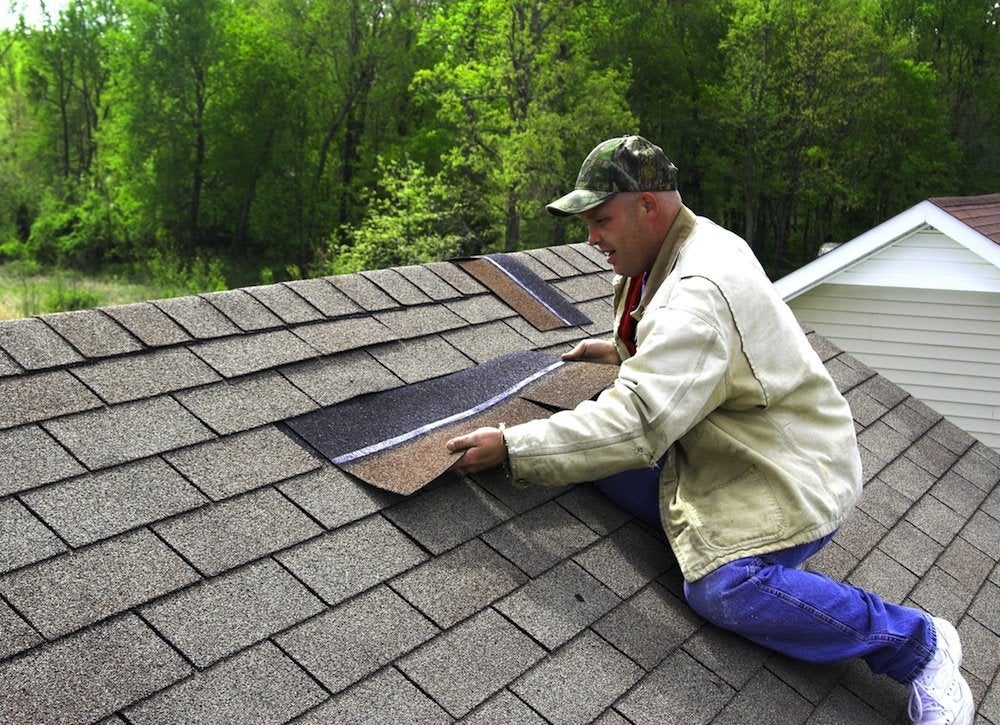

Choosing the Right Roofing Contractor
Seek Referrals and Recommendations
When choosing a roofing contractor, start by seeking referrals and recommendations from friends, family, or neighbors who have recently had their roofs repaired or replaced. Their firsthand experiences can provide valuable insights into the quality of the workmanship, professionalism, and reliability of different roofing contractors in your area.
Verify License and Insurance
Before hiring a roofing contractor, it’s crucial to verify their license and insurance. Licensed contractors have met the necessary requirements and demonstrated their competence in performing roofing work. Insurance coverage, including liability and worker’s compensation, is essential to protect you from any potential accidents or damages that may occur during the project.
Check Experience and Expertise
Assessing the experience and expertise of a roofing contractor is crucial in ensuring a quality installation or repair. Consider how long the contractor has been in business and their track record of successfully completed projects. Look for contractors specializing in the specific type of roof material you choose to ensure they have the necessary skills and knowledge to handle the job effectively.
Review Customer Testimonials
Reading customer testimonials and reviews can provide valuable insight into the reputation and customer satisfaction level of a roofing contractor. Look for testimonials on their website or review platforms to gauge the experiences of past customers. Positive reviews and testimonials can give you confidence in the contractor’s ability to deliver professional and reliable service.
Request Detailed Written Estimates
Before committing to a roofing contractor, it’s important to request detailed written estimates for the proposed work. The estimate should include a breakdown of the costs, materials to be used, and project timeline. Comparing estimates from different contractors can help you make an informed decision based on the cost, scope of work, and estimated completion time.
Costs Involved in Roof Replacement
Roof Material and Size
The cost of roof replacement depends on factors such as the type of roof material and the size of the roof. Different roofing materials have varying price ranges, with materials like slate and metal being more expensive than asphalt shingles. The size of the roof also affects the cost, as larger roofs require more materials and labor to complete the installation.
Labor Costs
Labor costs are a significant component of roof replacement expenses. The complexity of the project, the accessibility of the roof, and the time required to complete the installation all contribute to labor costs. Roofs with multiple pitches, steep slopes, or intricate designs may require more labor and, consequently, higher costs.
Removal of Old Roofing
If you are replacing an existing roof, the cost of removing the old roofing material should be considered. This involves stripping away the old shingles, underlayment, and any other roofing components. The cost of removal varies based on the type of roof material and the size of the roof.
Additional Repairs or Upgrades
During the roof replacement process, it may be necessary to address additional repairs or upgrades. This can include repairing damaged roof decking, replacing damaged or deteriorated flashing, or adding insulation. The cost of these additional repairs or upgrades should be factored into the overall budget for the roof replacement.
Building Permits and Inspections
Obtaining the necessary building permits and scheduling inspections adds to the overall cost of roof replacement. Permit fees vary depending on local regulations and the scope of the project. It’s important to check with your local building department to understand the permit requirements and associated costs before starting the roof replacement process.
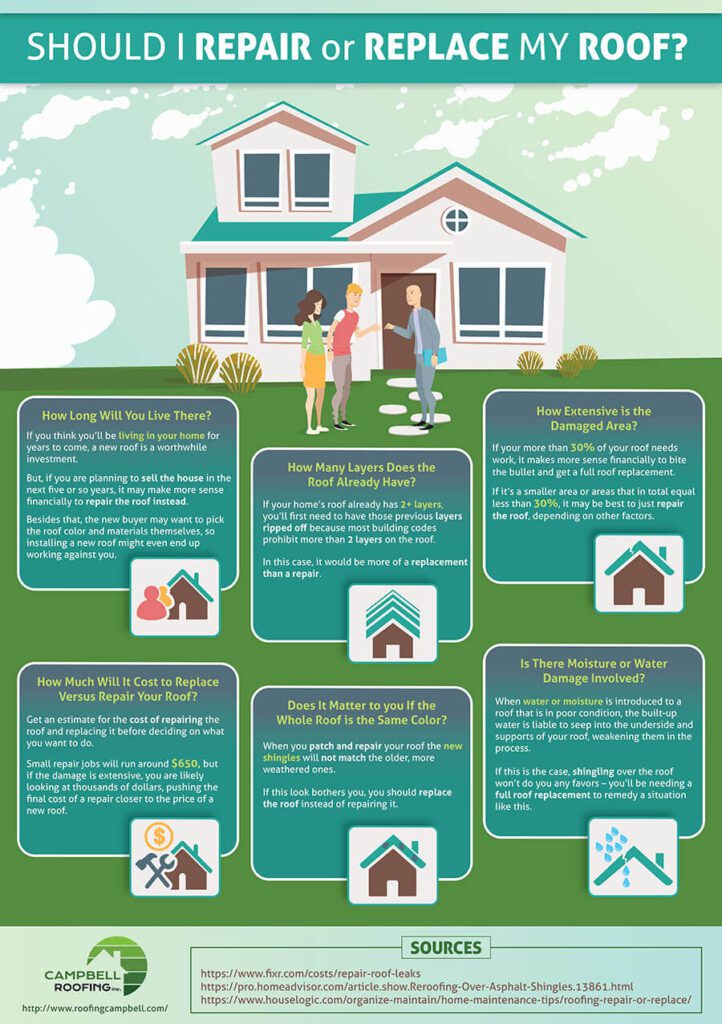

Tips for Maintaining and Extending Roof Lifespan
Regularly Clean Gutters and Downspouts
Cleaning gutters and downspouts is an essential part of roof maintenance. Clogged gutters can lead to water pooling on the roof, causing leaks and other forms of water damage. Regularly removing leaves, debris, and other obstructions from gutters and downspouts ensures proper drainage and prevents potential roof issues.
Trim Overhanging Tree Limbs
Overhanging tree limbs can pose a risk to your roof. Branches rubbing against the roof’s surface can damage the shingles or dislodge them, potentially leading to leaks or other forms of damage. It’s important to trim back any overhanging tree limbs to prevent these issues and reduce the risk of storm damage caused by fallen branches.
Check and Repair Flashings
Flashings are metal pieces that seal the joints and transitions in your roof, such as around chimneys, vents, and skylights. Over time, flashings can become damaged or deteriorate, compromising the integrity of the roof and leading to leaks. Regularly inspecting the flashings and promptly repairing or replacing any damaged sections ensures proper waterproofing and extends the lifespan of your roof.
Remove Algae or Moss
If you notice the growth of algae or moss on your roof, it’s important to remove it promptly. Algae and moss can retain moisture, accelerating shingle deterioration and compromising the roof’s integrity. Depending on the extent of the growth, you can use a mild detergent solution or a specialized roof cleaning product to safely remove the algae or moss.
Inspect Attic for Signs of Moisture
Regularly inspecting your attic for signs of moisture is crucial in maintaining the integrity of your roof. Look for water stains, mold, or a musty odor, as these may indicate a roof leak. Addressing leaks promptly prevents further damage and potential mold growth. It’s also important to ensure proper attic ventilation to minimize moisture buildup and preserve the longevity of your roof.
Address Roof Leaks Promptly
If you notice any signs of a roof leak, such as water stains on your ceiling or walls, it’s crucial to address it promptly. Ignoring a leak can lead to significant water damage, including weakened structures, mold growth, and costly repairs. Contacting a professional roofer to assess and repair the leak is essential in preventing further damage to your roof and home.
When to Hire a Professional Roofer
Complex Roofing Problems
Complex roofing problems, such as extensive leaks, severe storm damage, or structural issues, require the expertise of a professional roofer. Attempting to tackle these problems without the necessary knowledge and experience can lead to improper repairs and further damage to your roof. It’s best to leave complex roofing problems to the professionals who have the skillset to address them effectively.
Extensive Damage
If your roof has extensive damage, such as missing shingles, large areas of granule loss, or widespread leaks, it’s important to hire a professional roofer for a thorough assessment. Extensive damage may require a partial or full roof replacement rather than simple repairs. A professional roofer can evaluate the extent of the damage and recommend the appropriate course of action.
Structural Issues
Structural issues, such as sagging or uneven roofs, may require immediate attention from a professional roofer. These issues can indicate underlying problems with the roof’s structure or supports and pose a significant safety risk. A professional roofer will have the knowledge and expertise to assess the structural integrity of your roof and implement the necessary repairs or replacements.
Time Constraints
If you have time constraints due to work or other commitments, hiring a professional roofer is a practical choice. Roof repairs or replacements can be time-consuming, requiring planning, preparation, and implementation. By hiring a professional with the necessary resources and experience, you can ensure that the project is completed efficiently and within the desired timeframe.
Lack of Experience or Safety Equipment
Roof work can be dangerous, requiring proper safety equipment and training. If you lack the experience or necessary safety equipment, it’s best to hire a professional roofer to avoid accidents or injuries. Professional roofers have the required safety gear, such as harnesses and fall protection, to ensure their safety while working at heights. Hiring a professional not only protects you but also ensures the quality and safety of the roofing project.
In conclusion, the lifespan of your roof is influenced by various factors such as climate, roof material, installation quality, maintenance, damage severity, and homeowner’s insurance. Recognizing the signs that your roof may need replacement, understanding the average lifespan of different roofing materials, and scheduling regular inspections are essential in maintaining a durable and long-lasting roof. By investing in regular maintenance, choosing the right roofing contractor, and promptly addressing any issues, you can extend the lifespan of your roof, prevent costly repairs, and enhance the value of your home.


